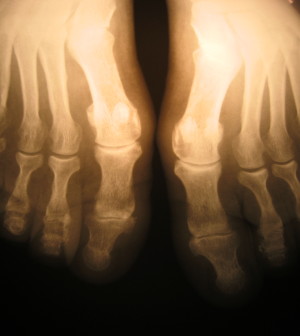- Skip Storing This Everyday Product in the Fridge Door
- Green Tea + B3 Pairing May Boost Brain Health
- Navigating Your Midlife Crisis: Embracing New Possibilities
- City Raccoons Showing Signs of Domestication
- Mapping the Exposome: Science Broadens Focus to Environmental Disease Triggers
- One Week Less on Social Media Linked to Better Mental Health
- Your Brain Changes in Stages as You Age, Study Finds
- Some Suicide Victims Show No Typical Warning Signs, Study Finds
- ByHeart Formula Faces Lawsuits After Babies Sickened With Botulism
- Switch to Vegan Diet Could Cut Your Greenhouse Gas Emissions in Half
Knee Replacement Brings Less Pain, Better Function

Total knee replacement usually results in greater pain relief and better joint function after a year than nonsurgical arthritis treatment, researchers report.
But baby boomers shouldn’t automatically rule out physical therapy for moderate to severe knee arthritis, the authors of the new study said.
“There are nearly 700,000 knee replacements done in the United States each year, but evidence of their benefit has been lacking,” said lead author Soren Thorgaard Skou, a researcher in the musculoskeletal function and physiotherapy unit at the University of Southern Denmark in Odense.
By 2010, knee replacement had become the leading inpatient surgery performed on adults 45 and over in the United States, according to data from the U.S. National Hospital Discharge Survey. Average age of the recipients was 66.
For the study, Skou’s team randomly assigned 100 patients with moderate to severe knee arthritis to either total knee replacement plus 12 weeks of nonsurgical treatment or to nonsurgical treatment only. The nonsurgical group received physical therapy, diet advice, shoe insoles and pain medication.
After one year, 85 percent of the joint replacement patients reported clinically significant improvement in pain compared to 68 percent of the nonsurgical group, the study found. Quality of life was boosted in the joint replacement group as well, and these surgical patients made bigger gains in ability to walk, climb stairs and perform other daily activities.
However, complications were much less likely in the nonsurgical group.
Dr. Jeffrey Katz is a professor of orthopedic surgery at Harvard Medical School in Boston, and author of an accompanying journal editorial. He commented, “We have never before had a randomized controlled trial of knee replacement that permits a direct comparison of knee replacement versus physical therapy.”
The study shows knee replacement is much better for pain relief, but physical therapy is often effective and should be viewed as a viable option, especially for those concerned about the risks of surgery, Katz said.
Those risks include the possibility of blood clots in the legs (deep vein thrombosis) and knee stiffness that requires manipulation to restore normal motion, the study authors said.
“Patients have a choice,” Katz said. “Knee replacement is among the most successful interventions in modern medicine, but physical therapy is a reasonable choice for patients as well.”
Skou recommended discussing the procedure with your doctor to determine if the risks are worth the potential benefits.
Patients can try nonsurgical options such as weight loss and physical therapy, and then see if a knee replacement is necessary, Skou said.
“A lot of patients do not need the surgery,” he added.
Patients should also be warned that current replacements last 10 to 15 years, Skou said. When the artificial joint wears out, another operation will be needed. The second replacement is less likely to be as effective as the first, he said.
“If you can postpone the first surgery, then you may be able to prevent the second surgery,” Skou said.
Another consideration: Surgery is irreversible, while nonsurgical treatment leaves the surgical option open, he pointed out.
The report was published Oct. 22 in the New England Journal of Medicine.
More information
For more on knee replacement, visit the American Academy of Orthopedic Surgeons.
Source: HealthDay
Copyright © 2025 HealthDay. All rights reserved.










